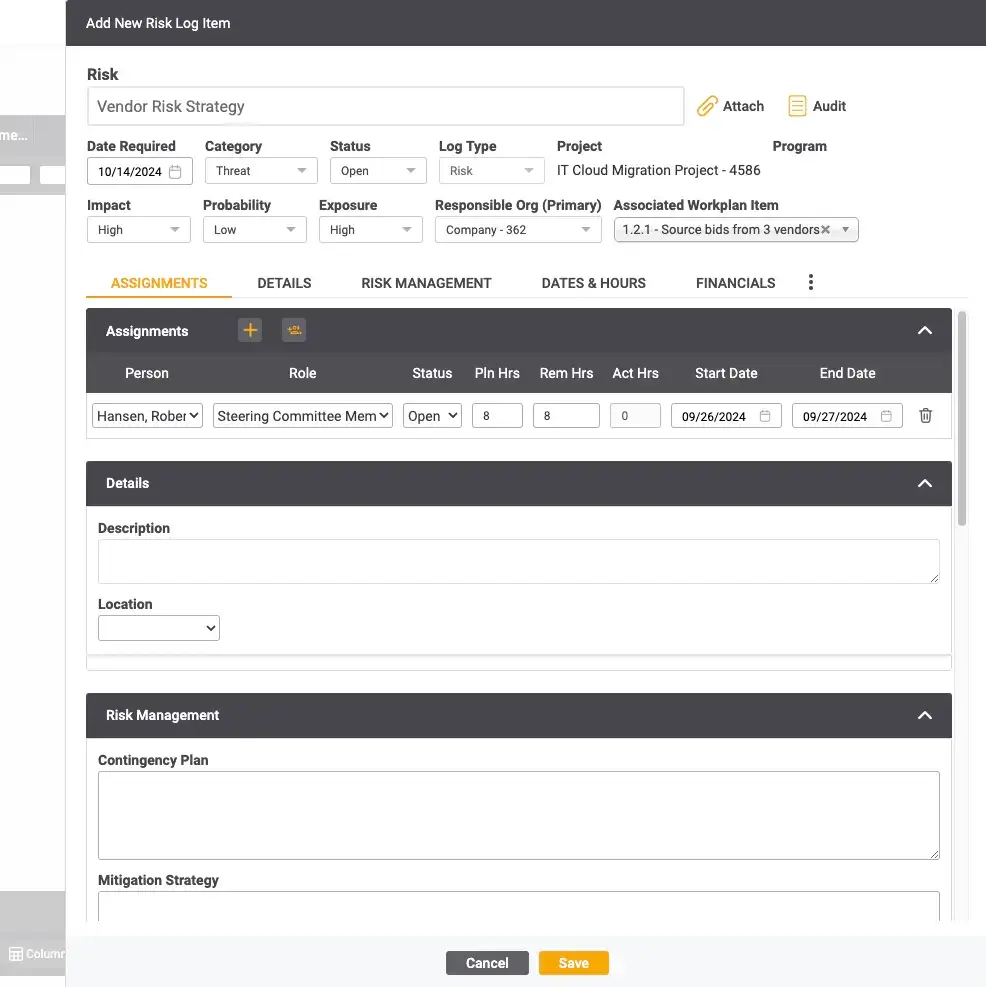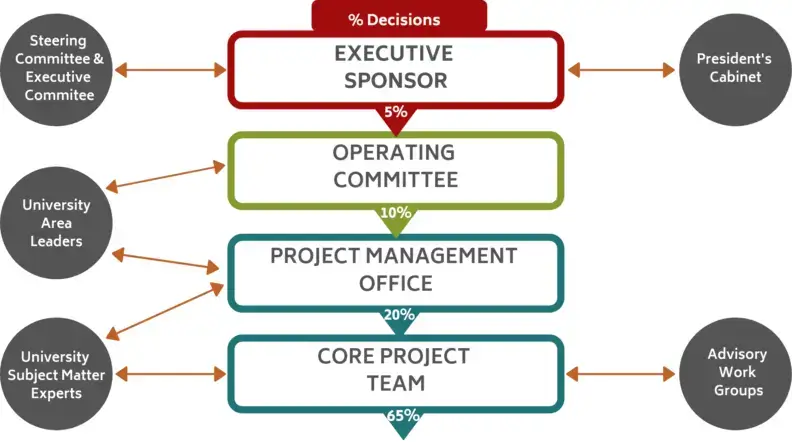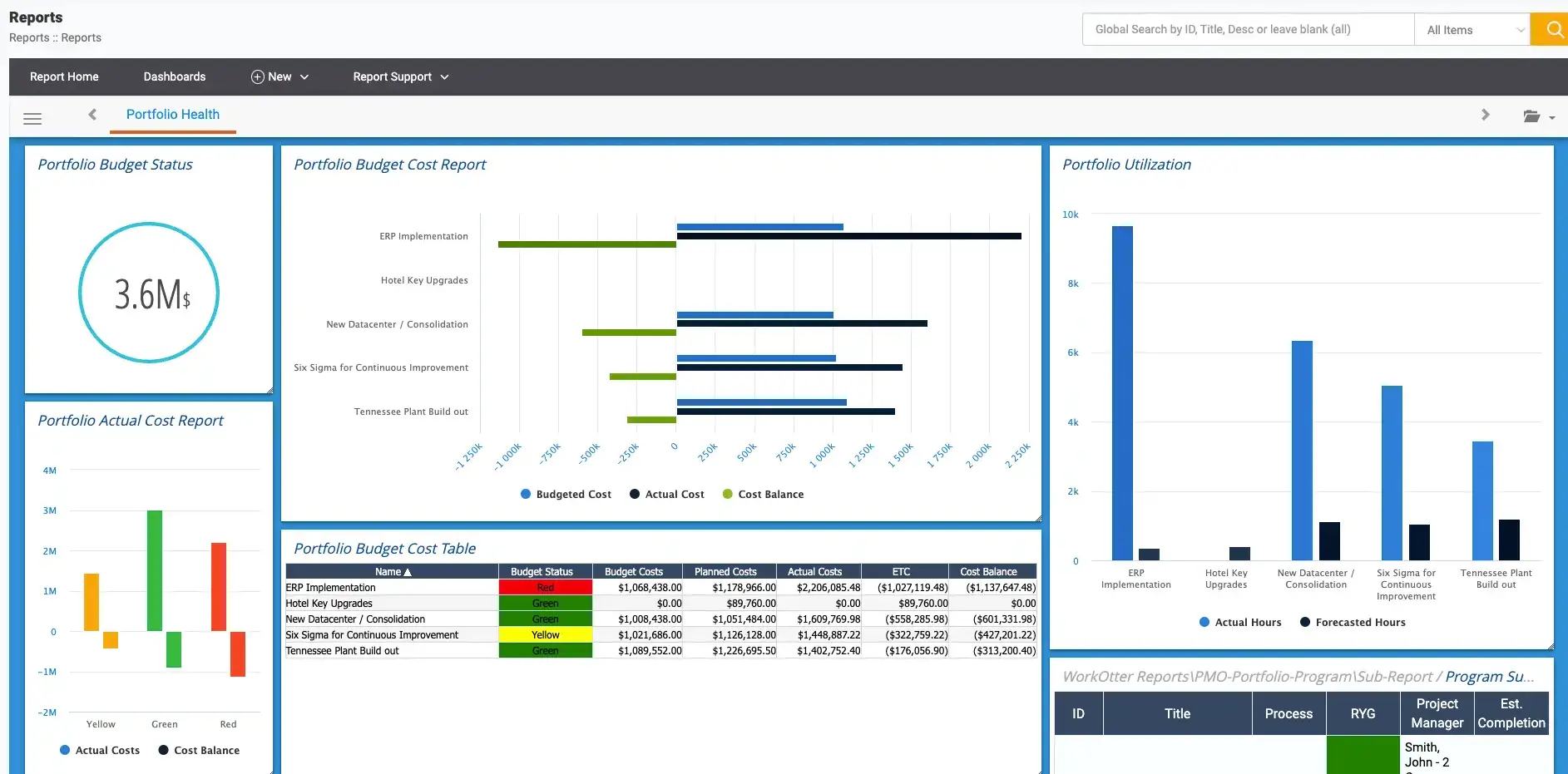TL;DR
Project portfolio governance provides the framework for selecting, prioritizing, and overseeing projects to ensure strategic alignment, optimal resource use, and consistent delivery. By defining clear roles, decision-making criteria, and oversight processes, PMOs can maintain transparency, manage risk, and drive portfolio success.
Implementing Effective Project Portfolio Governance
Implementing a strong governance framework involves setting up clear processes for project approval, oversight, and review. Governance should be designed to ensure that all projects align with strategic goals and that they are executed according to standardized best practices. According to a 2024 report from PMI, 80% of high-performing organizations have a well-defined governance framework in place, which contributes significantly to their ability to meet business goals.
What is Portfolio Governance?
Simply put, portfolio governance is the rules of engagement established to ensure that every project, and the aggregated portfolio or portfolios, align with strategic organizational goals.
The Importance of Strategic Alignment in Portfolio Governance
In order to be successful, effective portfolio governance must align the projects in a given portfolio with high-level business objectives and the stakeholders who drive them. A key component to project portfolio management, alignment in strategic project portfolio management may include:
- Compliance Alignment: In a heavily regulated industry, PPM ensures alignment with regulatory requirements by prioritizing projects that address compliance issues, such as updates to meet new legislation or security protocols.
- Risk Alignment: PPM can align projects by prioritizing those with lower risks and adjusting resources accordingly. This helps ensure that the company does not undertake projects that could expose it to significant risks unless they are strategically justified.
- Technological Alignment: If implementing new technologies (like moving to the cloud or AI adoption) is strategic objective the Project Management Office (PMO) can prioritize technology-driven projects that enable these advancements.

Project risks are logged and prioritized in Prism PPM
Project Portfolio Governance Roles and Responsibilities
Central to effective project governance is the ability of the team to work together to achieve desired outcomes. Key PPM governance roles are usually:
1. Executive Steering Committee: these are the senior executives or board members who provide strategic oversight
- Defines the strategic direction, ensures proejcts are aligned with business objectives
- Prioritizes portfolios, monitors overall portfolio performance and makes go/no-go decisions for major projects
- Ensures proper risk management and addresses escalated issues
2. Portfolio Manager: oversees the management of the overall portfolio of projects
- Develops and maintains the portfolio roadmap
- Evaluates, selects and prioritizes projects based on value, risk, and resource capacity
- Manages portfolio performance, tracks progress, and reports to the steering committee
3. Project Sponsor: typically a senior leader accountable for the success of an individual project or program
- Defines the project’s vision and ensures alignment with business objectives
- Secures resources and funding
- Monitors project progress and guide the project team
4. Program Manager: oversees related projects grouped into a program to achieve collective benefits
- Manages interdependencies between projects within the program.
- Ensures alignment with program objectives
- Handles program-level risks, issues, and resources
5. Project Manager: manages the day-to-day execution of individual projects
- Plans and executes project activities in line with defined scope, budget, and timeline
- Communicates project status, risks, and issues to stakeholders and sponsors
- Ensures compliance with governance processes and reporting requirements
6. PMO (Project Management Office): provides centralized oversight and project and portfolio management support.
- Establishes and enforces project management methodologies, standards, and processes
- Monitors portfolio performance and ensures reporting consistency across projects
- Facilitates decision-making by providing data and insights on portfolio performance
7. Stakeholders: the individuals or groups affected by the portfolio or its projects, either directly or indirectly.
- Provide input on project requirements, priorities, and goals
- Review and approve project deliverables as they are completed
- Offer feedback to the project team
Other key roles and responsibilities might include:
- Business analyst: documents business requirements, works closely with project managers to ensure objectives are met, facilitates communication between business stakeholders and technical tea
- Risk and Compliance Manager: manages risk and compliance within the portfolio, develops and implements risk management frameworks, monitors the steps of the risk management process and escalates issues when necessary
- Financial (or Portfolio) Controller: monitors and controls financials including developing, tracking and reporting on the portfolio budget, ensuring financial alignment with strategy and visibility into financials to assist in decision-making – Track project budgets and financial performance across the portfolio.
What is a PPM Accountability Framework?

And example of a Higher Ed PPM governance hierarchy. Source: Washington State University
A PPM accountability framework is a set of principles, processes, and tools that guide the planning, execution, and realization of benefits in the project portfolio. It helps create a transparent system where tasks are assigned, monitored, and evaluated and each role takes responsibility for specific actions and decisions.
Common PPM frameworks include:
- Project Management Institute (PMI) Standard for Portfolio Management
- PRINCE2 methodology
- Agile PPM methodology
Project Portfolio Governance Framework
Setting a framework for effective project governance is key to maintaining alignment. Project governance frameworks should be adaptable, allowing changes as the PMO processes mature. You can borrow from the 4 domains typically addressed in Portfolio Management to ensure you are covering these main areas:
- Alignment – everyone down to individual contributors should have an understanding of how a project is being valued and measured.
- Risk – surfacing project risks are essential and aggregating risks across the portfolio will enable a greater understanding of interdependencies among projects
- Performance – tracking project and portfolio health, communicating clear expectations, and meaningful reporting help to keep projects performing to expectation
- Communications – how and what to communicate should be mapped out, including processes for escalation and decision-making
How to Establish Project Portfolio Governance
Establishing the right project portfolio governance for your organization depends a lot on your project posture. Are your projects large and complex? Do you have multiple portfolios? Do you have a XXX PMO? How receptive and willing are the key players who will set up and manage the rules of engagement?
Understanding all of these factors will greatly help as you take the steps to set up your governance:
- Step 1: Define governance structures for items like project intake and prioritization
- Step 2: Identify key stakeholders in your organization who need to be involved
- Step 3: Create policies and procedures that inform and align
- Step 4: Determine leading and lagging KPIs, the right PPM tool will aid in tracking and reporting
- Step 5: Set up a communication plan that includes reports, meetings, collaboration channels, etc.
- Step 6: Determine resourcing including training needs and capacity constraints
Key Challenges in Project Portfolio Governance
Most challenges to effective governance are rooted in PPM challenges, and might include:
- A lack of strategic alignment can lead to low value projects being prioritized over more important ones
- Ineffective resource management can affect project timelines, budgets and employee morale
- Limited or no visibility into project health and status limits the ability to proactively address problems
Striking the right balance in between providing enough structure to govern effectively and allowing flexibility is critical to success. It helps to think of any governance plan as iterative and the PMO should collect feedback regularly to improve processes.
Manage & Optimize your Project Portfolio with Prism PPM!
Ready to see how Prism PPM’s portfolio management solution can help you get better results across every project through efficient resource management, better project controls, and reports that inform everyone from project teams to executive stakeholders? Let us show you how! Get a demo or download the Buyers Guide
How to Optimize Resource Allocation through Portfolio Governance
Efficient and effective resource allocation depends on strong project portfolio governance. With a solid governance framework, organizations can prioritize projects, staff and track resource usage, and make data-driven decisions to clear bottlenecks and see that projects have the necessary resources to meet their needs.
Managers need to ensure people are being staffed according to their skill sets and not over or under-utilized. There are many ways to optimize resource allocation through stronger governance:
- With centralized resource management (most often this refers to people but it could also be equipment or another resource type) resource tracking and reporting is more efficient.
- Establishing a project prioritization framework, aligned with company goals, within your governance model is key for understanding risks, ROI, and resource availability.
- Resource allocation and dispute resolution is easier with a decision-making body or a set of guidelines established to fairly distribute resources based on project priorities
- Establishing a project prioritization and selection committee or review board to evaluate new projects, assess resource needs and prioritize based on organizational goals
- Ensuring that the organization’s limited resources are directed towards the most impactful and strategic initiatives is easier with regular reviews and adjustments to your project porfolio and
- Central to effective governance is the ability to improve results through feedback loops and process monitoring mechanisms. Continuously improving delivery also enhances resource allocation and also the environment in which your staff works
Adapting Governance to Organizational Structure and Culture
Leaders should take care to consider organizational culture and balance governance needs with operational efficiency. Over emphasis on process can lead to longer timelines and bureaucracy, too few controls or too little communication will not set teams up for success.
The goal is to drive adoption of governance by demonstrating the benefits of working smarter, not harder, to achieve maximum results. This takes time, involves constant measurement and communication. Use every project as a way to continually prove the efficacy of your governance framework and also to inform future changes.
Achieving a balance between flexibility and control in Governance
Also important is the balance between rigid controls and flexibility. Remaining agile is important and organizations must carefully adapt processes to create a framework that provides appropriate oversight while enabling efficient portfolio management and value delivery.
Careful measurement and established communication channels (e.g. regular meetings, reporting, and/or collaboration tools like software built for project and portfolio management) will help surface the issues that require more control, and also the places where the process is working well.
Optimizing Governance with Strategic Tools and Technology
To effectively govern a project portfolio, you have a choice of tools in key functionalities like portfolio management, project tracking, resource allocation, risk management, and reporting.

Customizable dashes in Prism PPM enable every stakeholder to track in real-time the metrics that matter most to them
Project portfolio management tools like Prism PPM provide the necessary capabilities to prioritize, align projects with strategy, and manage resources.
Project Tracking & Collaboration Tools such as Jira are popular for tracking and managing multiple projects within a portfolio.
Reporting and analytics tools like Power BI are often integrated for real-time visualization of portfolio performance
Additionally, enterprise organizations may integrate the use of risk and compliance management tools and financial management tools.
These tools can work in combination or individually, depending on your portfolio’s complexity and the organization’s requirements for governance. Hundreds of companies use Prism PPM to achieve the necessary visibility, reporting, and alignment required for effective PPM management.
Summary
Good portfolio govnernance is key to ensuring the right projects are selected and managed properly to maximize the realized benefit of each project. It covers the ways teams will work, communicate and make decisions. Creating a governance framework isn’t always easy, but with the right controls in place, every aspect of managing projects and project portfolio becomes easier.
Prism PPM is here to help you understand your choices for Project Portfolio Management.
Our Buyer’s Guide breaks down the various options in the software marketing and provides checklists to help with needs assessment and vendor selection.
We are also available to show you how Prism PPM can help you improve your project outcomes, empower your PMO, and align every project with organizational goals.
Book a demo with us to learn more.